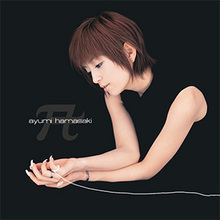A (Ayumi Hamasaki album)
| A | ||||
|---|---|---|---|---|
 |
||||
| EP by Ayumi Hamasaki | ||||
| Released | August 11, 1999 | |||
| Recorded | January–July 1999; Prime Sound Studio, Studio Sound Dali, Onkio Haus (Tokyo, Japan); Soundtrack (New York City, New York) |
|||
| Genre | ||||
| Length | 1:15:48 | |||
| Label |
|
|||
| Producer | Max Matsuura | |||
| Ayumi Hamasaki chronology | ||||
|
||||
| Singles from A | ||||
|
||||
A (stylized as ![]() ) is an extended play (EP) by Japanese recording artist Ayumi Hamasaki. It was released by Avex Trax in Japan and Hong Kong on August 11, 1999 in 10 different editions, and through Avex Entertainment Inc. worldwide in September 2008. It also served as a single through her second studio album Loveppears (1999), and is her first single marketed as an EP. The EP includes the four original tracks "Monochrome", "Too Late", "Trauma", and "End Roll", all served as promotional single from A, alongside eight remixes. The tracks written by Hamasaki herself, while production was handled by long-time collaborator Max Matsuura.
) is an extended play (EP) by Japanese recording artist Ayumi Hamasaki. It was released by Avex Trax in Japan and Hong Kong on August 11, 1999 in 10 different editions, and through Avex Entertainment Inc. worldwide in September 2008. It also served as a single through her second studio album Loveppears (1999), and is her first single marketed as an EP. The EP includes the four original tracks "Monochrome", "Too Late", "Trauma", and "End Roll", all served as promotional single from A, alongside eight remixes. The tracks written by Hamasaki herself, while production was handled by long-time collaborator Max Matsuura.
Musically, A is a pop rock album that is influenced by dance music, a common trait that runs throughout its parent album. Lyrically, the original tracks are written in third person perspective and deal with themes such as nostalgia, anxiety and trauma. Upon its release, A received favorable reviews from music critics as both a collection and by individual tracks. Some of the tracks were highlighted as examples of Hamasaki's best work, whilst some praised the production of the original songs in compared to the album versions. However, a critic from CD Journal criticized the amount of remixes on the EP.
Commercially, the single was a success in Japan, peaking at number one on the Oricon Singles Chart and TBS' Count Down TV chart. It became Hamasaki's second consecutive single to sell over one million units in that region, and was certified Million by the Recording Industry Association of Japan (RIAJ) for shipments of one million units. It is Hamasaki's highest selling single, and additionally within Japan music history. No music videos were shot for the tracks, but Hamasaki and the original recordings appeared in commercial videos that broadcast in Japan. Each individual original track has appeared on Hamasaki's greatest hits albums, such as A Best (2001) and A Complete: All Singles (2007).
...
Wikipedia
